
After the first part of our Mr. Sato-lead tour of Tokyo’s Tsukiji fish market, we’re sure a lot of our readers are excited to see what else our resident gourmand had for us. And now the wait is over! Here are the last four sushi establishments as visited by Mr. Sato and his daring accomplice in raw fish consumption Nakano.
Whether you’re preparing for your first trip to Tokyo or just looking for some great places you might have missed, this is one article you’ll definitely want to read!
Our first stop in part two is Sushi-bun, which, sadly, does not allow photography inside. So, we can’t show you what their sushi looks like, but we can let Mr. Sato and Nakano tell you about it!
First, as you may have surmised from the no pictures rule, Sushi-bun may not be the most friendly place for tourists, but the food is first class. After eating here, Mr. Sato told Nakano, “This is going to totally change the ranking! It was so good!” As for Nakano, he singled out the broiled conger eel as being particularly good, saying that they were so soft and fluffy, you almost couldn’t pick it up with chopsticks.
Sushi-bun costs about as much as the places we saw in the first part of Mr. Sato’s sushi crawl. The omakase course is 3,675 yen (about US$30), though they have less expensive courses as well.
Moving on, the pair found themselves at Ichiba-zushi, an establishment that is apparently very particular about their raw, natural ingredients.
Unfortunately, despite their attention to detail, it seems that Ichiba-zushi wasn’t quite the right match for Mr. Sato. Nakano also said that while there was some good sushi there, it just didn’t stand up in comparison with the previous places. It might just be a case of bad timing, but it looks like Ichiba-zushi wasn’t as delicious as their other stops. Of course, that doesn’t mean you shouldn’t try it! Everyone has different tastes after all.
Here are a few snapshots of the sushi available at Ichiba-zushi, where the omakase course is also 3,675 yen (roughly $30).
We’re almost done with our tour! And our second-to-last stop is Ryu-zushi!
Like Ichiba-zushi, Ryu-zushi is very picky about their ingredients. They even have a poster outside the shop of all the fish being served with information about where they were caught!
However, it looks as if Ryu-zushi wasn’t quite pass muster for our dashing reporter, though in it’s defense this was based on its “cost performance.” At 4,200 yen (about $35), Ryu-zushi is the most expensive place the duo ate at. As for Nakano, he found the food tasty, but, like Mr. Sato, pretty expensive comparatively speaking.
But maybe these photos of their sushi will convince you to go anyway!
And our final stop on this two-part tour is Iso-sushi!
Located near the Tsukiji-shijo (“marketplace”) entrance, Iso-sushi also stands next to Chinese and Western restaurants, which are operated by the same owner. But how is their sushi?
“It’s pretty good!” Mr. Sato told Nakano, adding, “It’s a bit above average!” Which seems like praise…we think? Well, based on his smile, it seems like he’s a fan of Iso-sushi.
Costing 3,670 yen (around $30) for their most expensive set, Iso-sushi is priced around the middle of the pack for Tsukiji sushi restaurants. Check out some photos below!
Now that we’ve gotten through all eight of the sushi restaurants on the Mr. Sato Mouth Fun Sushi Ride in Tsukiji-shijo, let’s see how our favorite gourmand ranked all of them! We also have some additional comments on the restaurants to help you better decide where to eat at the fish market.
1. Sushi-bun
For Mr. Sato, this was like the dream team. Other places might have one or two specialties, but at Sushi-bun, everything is top class. But, if he had to pick one stand-out, he’d go with the broiled conger eel. “It’s like eating super high-quality sweets.”
2. Okame
In particular, Mr. Sato loved the medium-fatty tuna (chu-toro) here. Even with all the tuna they ate over the day, this was by far the best individual dish of all eight establishments. “None of the other restaurants can compare.”
3. Daiwa-sushi
While Sushi Dai may be more popular, for Mr. Sato’s money, Daiwa-sushi is just as good. He especially praised the balance between the fish quality and the shari (sushi rice), saying it created a great overall effect. While others are waiting in thr huge line for Sushi Dai, you can sit back and happily enjoy your sushi here.
4. Iwasa-sushi
Mr. Sato seemed pretty happy with the three-pieces-at-a-time pace of this restaurant, though he wasn’t such a big fan of the shari. However, this could be chalked up to personal taste, so if you like your shari a bit drier, you should check out Iwasa-sushi.
5. Iso-sushi
The sushi chef was quite friendly here, but it seems that Mr. Sato was a bit disappointed with his own order. He ordered the most expensive set, but after looking at what other customers got, he realized that the 2,500 yen limited set was probably a better deal. Keep that in mind if you go to Iso-sushi!
6. Yamazaki
“To be honest, I don’t have much of an impression of what this place was like. It was very orthodox sushi, without anything to really complain about.”
7. Ryu-zushi
Of all the places they ate at, this was the only one where they didn’t put out chopsticks for the customers. Probably the owners thought that the sushi was best eaten by hand, but that could be a bit of a sticking point for some. The sushi was very orthodox, but, again, there was nothing to complain about taste-wise. However, considering the cost and the fact that the restaurant also didn’t offer any soup, Mr. Sato had to give it a low ranking.
8. Ichiba-zushi
For Mr. Sato, this felt more like a neighborhood sushi restaurant, just some place that you might visit occasionally if it were nearby.
We also have a ranking from Nakano! See, you don’t have to take everything Mr. Sato says as law…but it probably wouldn’t hurt if you did.
1. Daiwa-sushi
Nakano chose Daiwa-sushi for the number one spot for its excellent sushi and its “Tsujikiji-shijo” vibe-a great place to really get the full effect of eating in one of the world’s largest fish markets. He also added that explanations are provided in English for tourists!
2. Sushi Dai
While Sushi Dai and Daiwa-sushi are roughly of the same quality, you can expect to wait a lot longer here, dropping it down to second place.
3. Iso-sushi
Third place goes to Iso-sushi thanks to its inexpensive menu and specialty items. Nakano recommended it for anyone on a budget who’s also looking for the Tsujikiji-shijo atmosphere.
4. Sushi-bun
“This place is really good. In terms of price, there’s not much to complain about either,” Nakano said, though in terms of “cost performance,” he said it was average.
5. Yamazaki
Though Mr. Sato wasn’t a big fan of Yamazaki, Nakano thought they were pretty good. It was the cost (and poor cost performance) that had him placing the establishment in the number five spot.
6. Okame
“It was good but average, and there’s not much to say beyond that.”
7. Iwasa-zushi
“This place was also pretty good, but very orthodox. There’s not much to add.”
8. Ryu-zushi
Nakano liked the sushi here and said that it was pretty good, but also added that the high cost and the fact that they didn’t get soup really lowered its ranking.
9. Ichiba-zushi
“It was about the same level as any standard sushi place where you pay 100 yen (about $0.83) per piece. It was good, but not something you’d go all the way to Tsukiji-shijo for.”
Finally, we have a bit of advice from Mr. Sato himself for tourists coming to Japan from overseas!
● While menus that have English are pretty helpful, places that have English menus aren’t usually that great. This is because they’re just trying to make money off of tourists and often their sushi isn’t usually that good.
● In particular, Ichiba-zushi is full of foreign tourists, but their sushi isn’t very good, so you should avoid it.
● You’ll probably want to skip places that offer rice bowls, since if the sushi is good, you shouldn’t need any extra rice.
And that’s it for our tour of Tsukiji-shijo sushi restaurants with Mr. Sato! Be sure to share your favorite if you’ve had a chance to stop by the fish market!
All images © RocketNews24
[ Read in Japanese ]

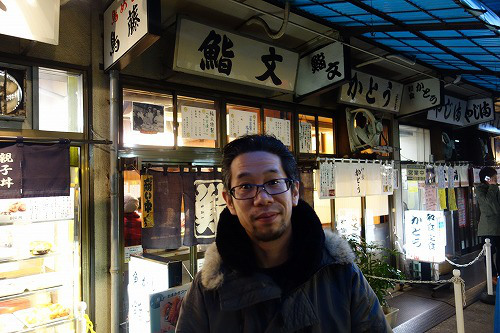
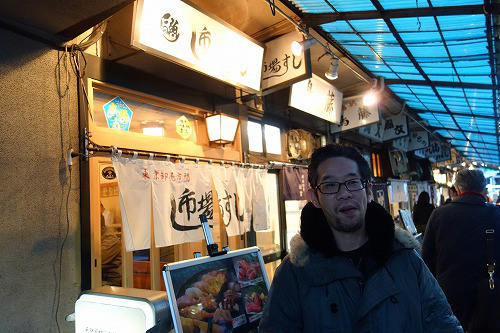
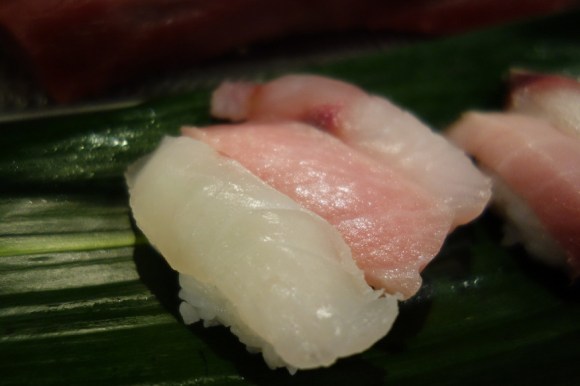
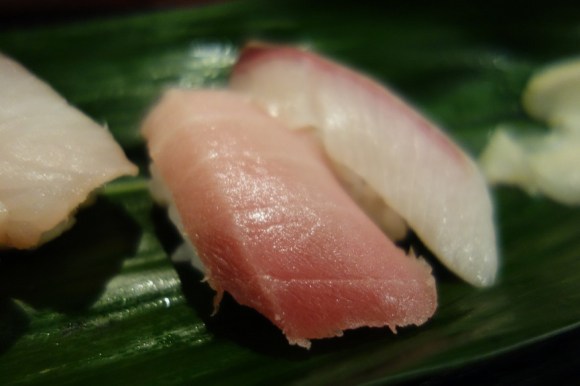
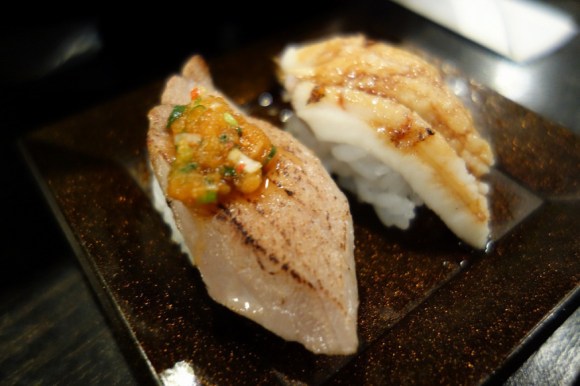
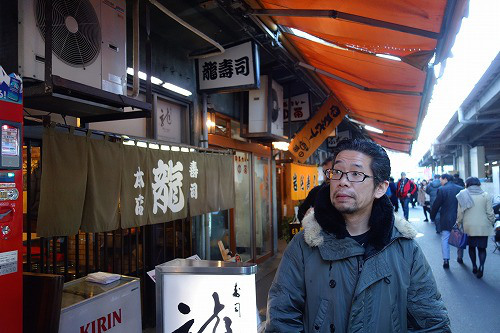
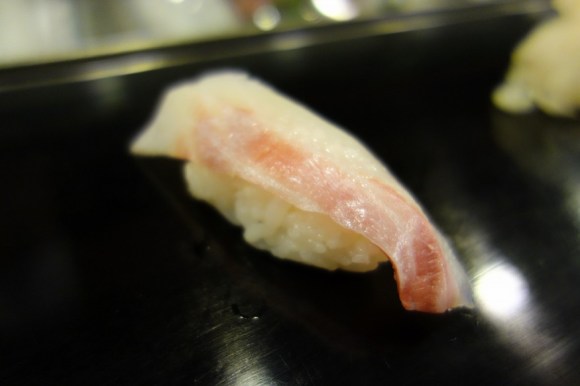
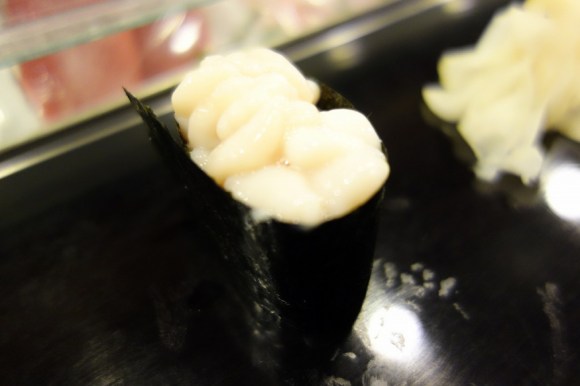
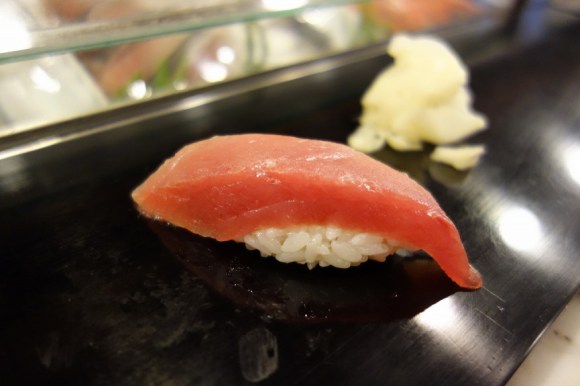
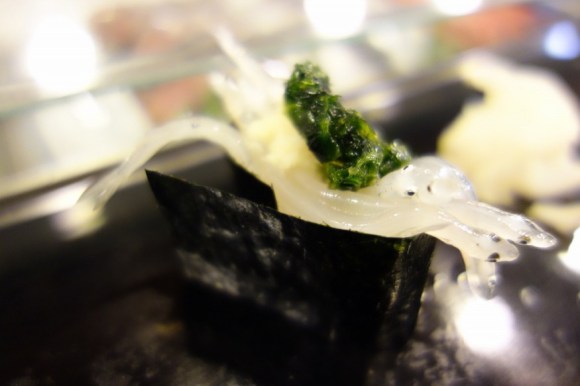
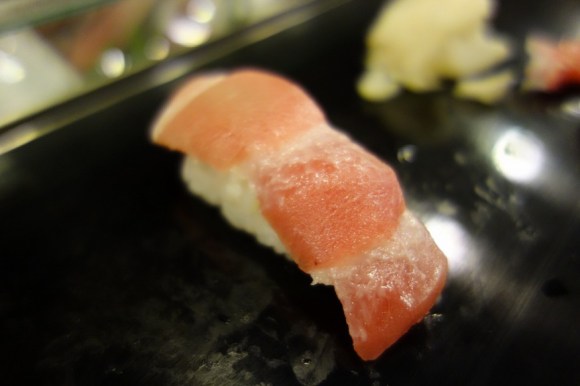
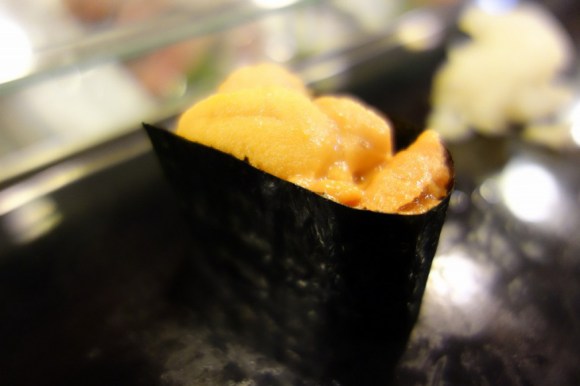
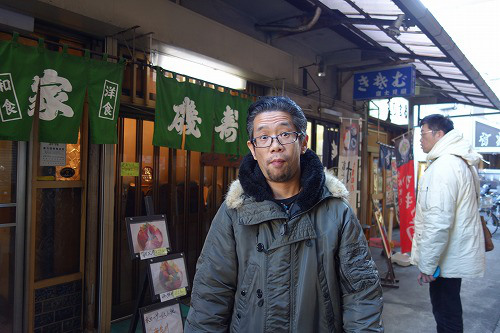
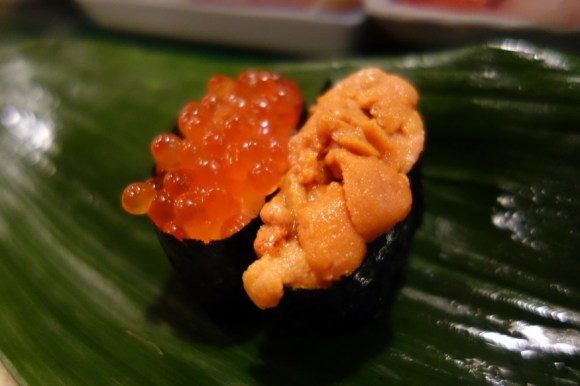
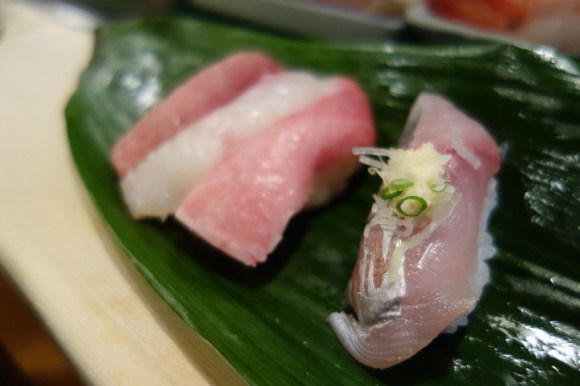
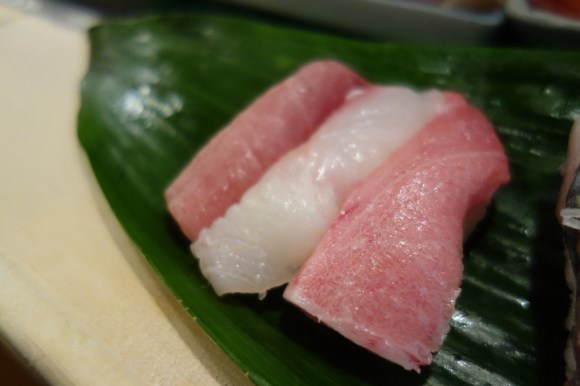
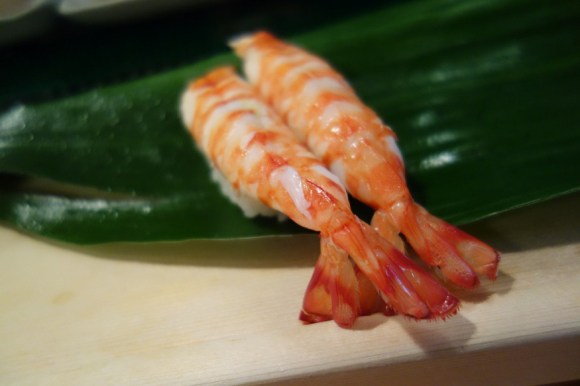

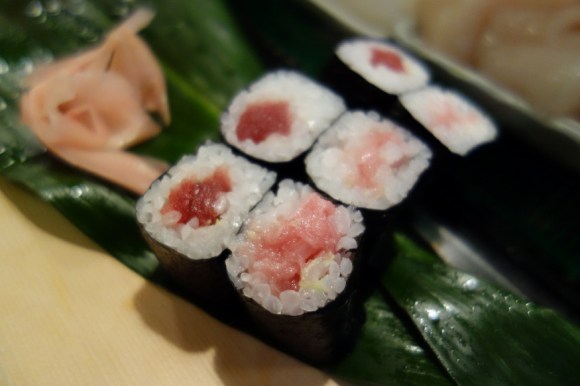
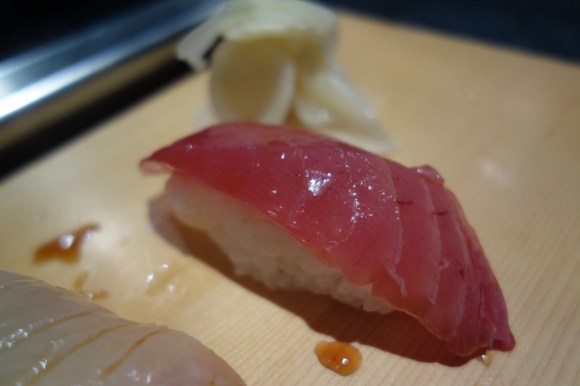
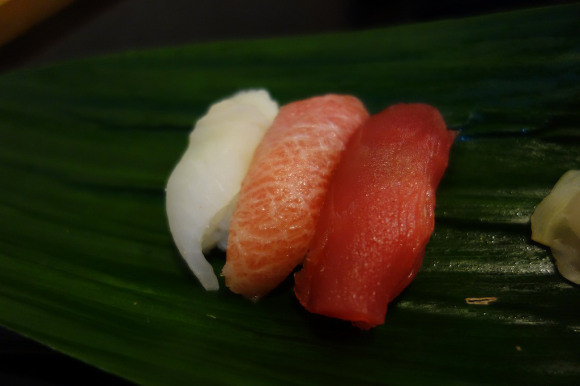
 Mr. Sato tries out Kappa Sushi’s salmon salad mountain, a fun dish available for only one week
Mr. Sato tries out Kappa Sushi’s salmon salad mountain, a fun dish available for only one week Tokyo has a BLUE sushi restaurant with all-you-can-eat BLUE sushi for just 400 yen (US$3.50)
Tokyo has a BLUE sushi restaurant with all-you-can-eat BLUE sushi for just 400 yen (US$3.50) Does how you dress affect what a sushi restaurant serves you? We experiment in Ginza
Does how you dress affect what a sushi restaurant serves you? We experiment in Ginza Sushi for breakfast? Our under-1,000-yen breakfast with Hama Sushi’s new morning menu
Sushi for breakfast? Our under-1,000-yen breakfast with Hama Sushi’s new morning menu $89 “Phantasmal Sushi Roll” fancies up life with Matsusaka beef and truffle salt 【Taste Test】
$89 “Phantasmal Sushi Roll” fancies up life with Matsusaka beef and truffle salt 【Taste Test】 McDonald’s new Happy Meals offer up cute and practical Sanrio lifestyle goods
McDonald’s new Happy Meals offer up cute and practical Sanrio lifestyle goods All-you-can-drink Starbucks and amazing views part of Tokyo’s new 170 meter-high sky lounge
All-you-can-drink Starbucks and amazing views part of Tokyo’s new 170 meter-high sky lounge Studio Ghibli glasses cases let anime characters keep an eye on your spectacles
Studio Ghibli glasses cases let anime characters keep an eye on your spectacles Beautiful Sailor Moon manhole cover coasters being given out for free by Tokyo tourist center
Beautiful Sailor Moon manhole cover coasters being given out for free by Tokyo tourist center More foreign tourists than ever before in history visited Japan last month
More foreign tourists than ever before in history visited Japan last month Super Nintendo World expansion gets delayed for several months at Universal Studios Japan
Super Nintendo World expansion gets delayed for several months at Universal Studios Japan Is the new Shinkansen Train Desk ticket worth it?
Is the new Shinkansen Train Desk ticket worth it? Princesses, fruits, and blacksmiths: Study reveals the 30 most unusual family names in Japan
Princesses, fruits, and blacksmiths: Study reveals the 30 most unusual family names in Japan Kyoto’s 100 Demons yokai monster parade returns!
Kyoto’s 100 Demons yokai monster parade returns! Beautiful new Final Fantasy T-shirt collection on the way from Uniqlo【Photos】
Beautiful new Final Fantasy T-shirt collection on the way from Uniqlo【Photos】 Disney princesses get official manga makeovers for Manga Princess Cafe opening in Tokyo
Disney princesses get official manga makeovers for Manga Princess Cafe opening in Tokyo Starbucks reopens at Shibuya Scramble Crossing with new look and design concept
Starbucks reopens at Shibuya Scramble Crossing with new look and design concept Foreign English teachers in Japan pick their favorite Japanese-language phrases【Survey】
Foreign English teachers in Japan pick their favorite Japanese-language phrases【Survey】 Japanese convenience store packs a whole bento into an onigiri rice ball
Japanese convenience store packs a whole bento into an onigiri rice ball We try out “Chan Ramen”, an underground type of ramen popular in the ramen community
We try out “Chan Ramen”, an underground type of ramen popular in the ramen community Studio Ghibli releases Kiki’s Delivery Service chocolate cake pouches in Japan
Studio Ghibli releases Kiki’s Delivery Service chocolate cake pouches in Japan Japan’s bone-breaking and record-breaking roller coaster is permanently shutting down
Japan’s bone-breaking and record-breaking roller coaster is permanently shutting down New definition of “Japanese whiskey” goes into effect to prevent fakes from fooling overseas buyers
New definition of “Japanese whiskey” goes into effect to prevent fakes from fooling overseas buyers Our Japanese reporter visits Costco in the U.S., finds super American and very Japanese things
Our Japanese reporter visits Costco in the U.S., finds super American and very Japanese things Studio Ghibli unveils Mother’s Day gift set that captures the love in My Neighbour Totoro
Studio Ghibli unveils Mother’s Day gift set that captures the love in My Neighbour Totoro Foreign passenger shoves conductor on one of the last full runs for Japan’s Thunderbird train
Foreign passenger shoves conductor on one of the last full runs for Japan’s Thunderbird train Domino’s Japan now sells…pizza ears?
Domino’s Japan now sells…pizza ears? New Japanese KitKat flavour stars Sanrio characters, including Hello Kitty
New Japanese KitKat flavour stars Sanrio characters, including Hello Kitty Kyoto creates new for-tourist buses to address overtourism with higher prices, faster rides
Kyoto creates new for-tourist buses to address overtourism with higher prices, faster rides Sales of Japan’s most convenient train ticket/shopping payment cards suspended indefinitely
Sales of Japan’s most convenient train ticket/shopping payment cards suspended indefinitely Sold-out Studio Ghibli desktop humidifiers are back so Totoro can help you through the dry season
Sold-out Studio Ghibli desktop humidifiers are back so Totoro can help you through the dry season Japanese government to make first change to romanization spelling rules since the 1950s
Japanese government to make first change to romanization spelling rules since the 1950s Ghibli founders Toshio Suzuki and Hayao Miyazaki contribute to Japanese whisky Totoro label design
Ghibli founders Toshio Suzuki and Hayao Miyazaki contribute to Japanese whisky Totoro label design Doraemon found buried at sea as scene from 1993 anime becomes real life【Photos】
Doraemon found buried at sea as scene from 1993 anime becomes real life【Photos】 Tokyo’s most famous Starbucks is closed
Tokyo’s most famous Starbucks is closed One Piece characters’ nationalities revealed, but fans have mixed opinions
One Piece characters’ nationalities revealed, but fans have mixed opinions We asked a Uniqlo employee what four things we should buy and their suggestions didn’t disappoint
We asked a Uniqlo employee what four things we should buy and their suggestions didn’t disappoint Is that restaurant in Tokyo with the giant mecha crab sign any good?
Is that restaurant in Tokyo with the giant mecha crab sign any good? We buy a sushi-restaurant-themed bath bomb that threatens to smell like the ocean
We buy a sushi-restaurant-themed bath bomb that threatens to smell like the ocean Japanese sushi chef samples the best cheap sushi the U.S. has to offer【Video】
Japanese sushi chef samples the best cheap sushi the U.S. has to offer【Video】 New sushi types: chocolate citrus yellowtail and cheddar cheese tempura. Crazy, or crazy good?
New sushi types: chocolate citrus yellowtail and cheddar cheese tempura. Crazy, or crazy good? Choshimaru offers a limited-time Explodingly Big Sushi Roll, or basically sushi in sushi armor
Choshimaru offers a limited-time Explodingly Big Sushi Roll, or basically sushi in sushi armor Sushi Dai and other famous restaurants from Tsukiji fish market open at new Toyosu location
Sushi Dai and other famous restaurants from Tsukiji fish market open at new Toyosu location Tokyo department store’s best beef sushi bento combines two of the best things in life
Tokyo department store’s best beef sushi bento combines two of the best things in life What your favorite sushi says about your income
What your favorite sushi says about your income Sushi from a vending machine — would you try it? Mr. Sato did
Sushi from a vending machine — would you try it? Mr. Sato did This is what a 10,800-yen (US$100) Tokyo sushi boxed lunch looks like【Taste test】
This is what a 10,800-yen (US$100) Tokyo sushi boxed lunch looks like【Taste test】 Can a plant-based restaurant serving Buddhist meals turn meat-loving Mr. Sato into a vegetarian?
Can a plant-based restaurant serving Buddhist meals turn meat-loving Mr. Sato into a vegetarian? How to choose a great block of sashimi-grade tuna – 66-year maguro master shares his protips
How to choose a great block of sashimi-grade tuna – 66-year maguro master shares his protips Japan’s oldest sushi train serves up unorthodox Blueberry Cream Sushi
Japan’s oldest sushi train serves up unorthodox Blueberry Cream Sushi Our reporter dishes on the differences between sushi from Ginza Kyubey and Sushiro【Taste test】
Our reporter dishes on the differences between sushi from Ginza Kyubey and Sushiro【Taste test】 How to use Japan’s revolving sushi capsule toy for a literal revolving sushi meal at home
How to use Japan’s revolving sushi capsule toy for a literal revolving sushi meal at home Pretty Princess Sato: Our hero gets his makeup done by a pro, brings all the boys to the yard
Pretty Princess Sato: Our hero gets his makeup done by a pro, brings all the boys to the yard
Leave a Reply